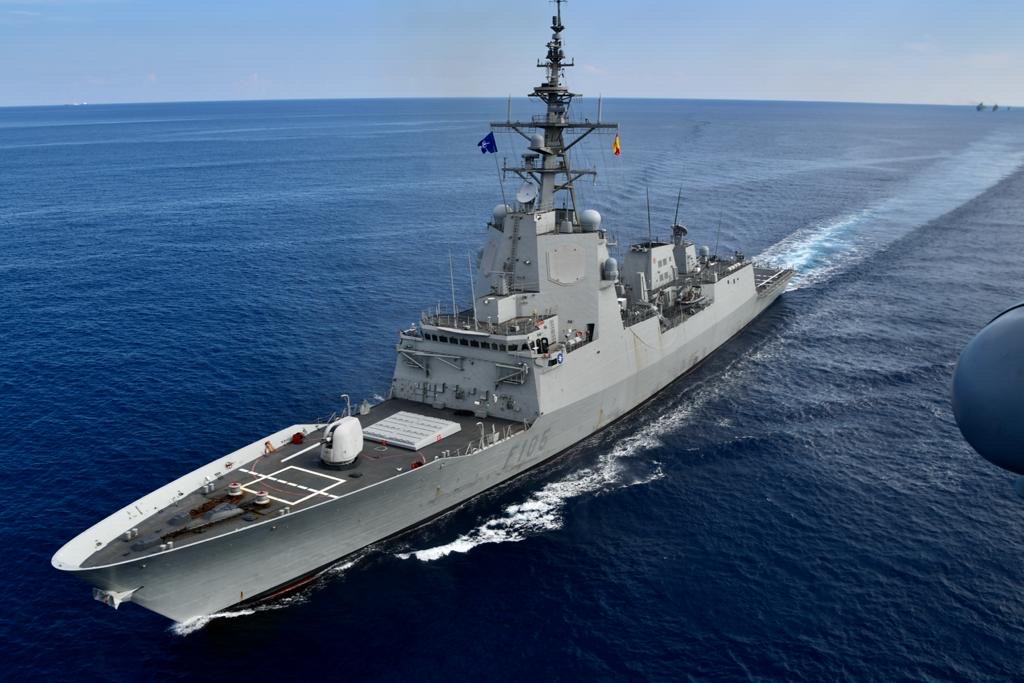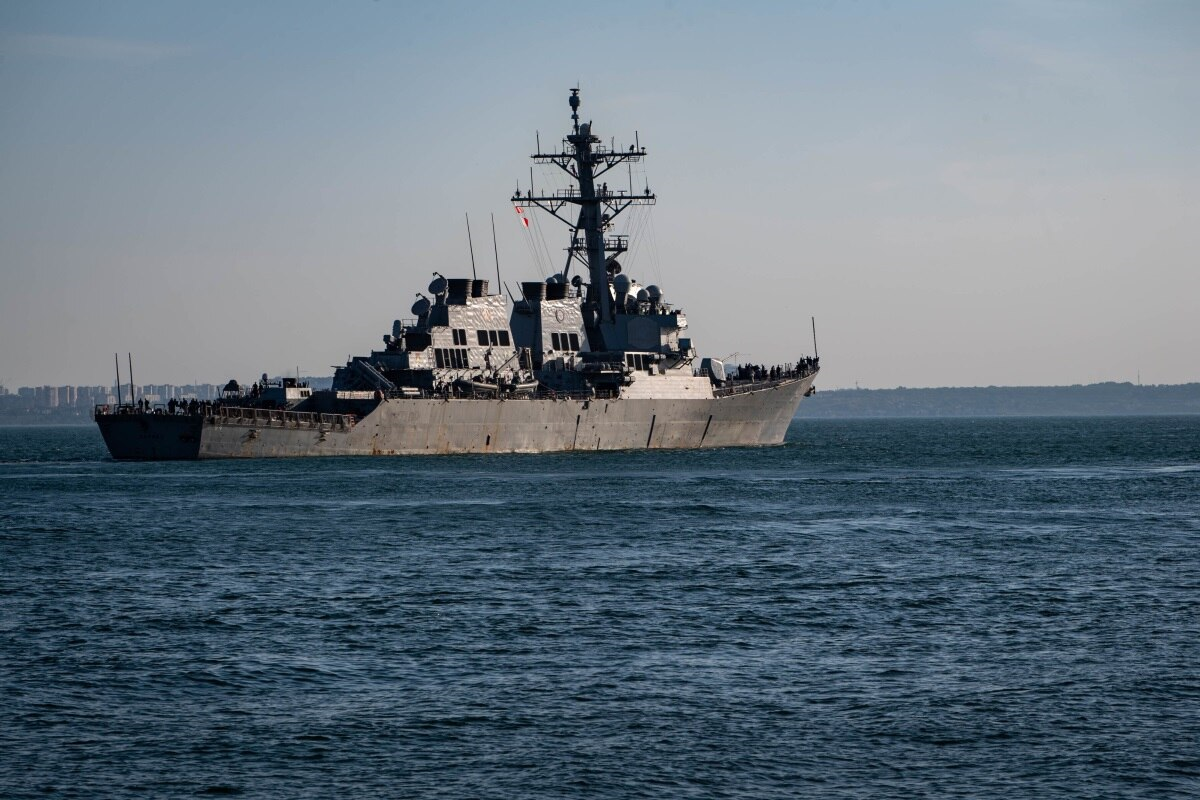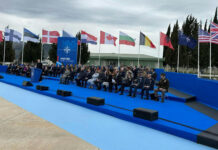Spain was always a crucial partner in the US effort to field missile defence capabilities in Europe to counter short, medium and intermediate range ballistic missile threats from Iran and North Korea.
In May 2020, the ARLEIGH BURKE class destroyer USS ROOSEVELT (DDG 80) arrived at Rota, Spain, replacing USS CARNEY (DDG 64) as part of the US Navy’s “forward rotation” while enhancing their “top-of-the line capabilities” to NATO’s missile defence. USS CARNEY was one of the four ships that Spain hosted along with:
- USS ROOSEVELT
- USS DONALD COOK (DDG 75)
- USS ROSS (DDG 71)
- USS PORTER (DDG 78)
Capability Upgrades
The new destroyer is equipped with new missiles and the Cooperative Engagement Capability datalink, able to “vastly increase the sea-based BMD force structure” in the European region. As noted by Robert Bell, Secretary of Defense Representative, Europe and Defense Advisor at the US Mission to NATO in 2014, “[w]ith these ships stationed in Rota, we (the United States and also NATO) can project a missile defence capability much more immediately and responsively in this region.”
It must be noted that Spain was always a crucial partner in the US effort to field missile defence capabilities in Europe to counter short, medium and intermediate range ballistic missile threats from Iran and North Korea. During the Obama Administration, it was planned under the European Phased Adaptive Approach announced in 2009, that the Aegis missile defence system would be deployed in Europe under three phases that would start in 2011 and extend until 2022.
By 2014, Spain was hosting four of the BMD capable Aegis ships that were equipped with SPY-7 radar at Rota to show their support for both NATO and the EPAA that it confirmed in 2011. The ships are equipped with SM-3 interceptors thereby making these destroyers a key component in NATO’s missile defence shield.
Spain thus became an integral element in the US and NATO’s layered missile defence capability. Spain’s participation in the EPAA programme “enabled the maximisation of BMD operational flexibility throughout the Mediterranean by utilising the only truly mobile interceptor platforms.” Hosting them in Rota, on Spain’s south-western Atlantic coast results in lesser ships being required to protect the US and NATO assets in the Mediterranean region.
One of the advantages of these BMD assets is that they can be placed under NATO operational control too in times of crisis, providing greater flexibility and operational capability.

Equipment Sales to Spain
In 2020, under Foreign Military Sales (FMS) to Spain, the US Navy awarded a contract worth US$519.1M to support the AEGIS and SPY-7 systems for Spain’s F-110 frigates – a Spanish programme to modernise their Navy. These included:
- AEGIS fire control loop development
- solid state S-band Radar Processing Group, tools and test equipment
- spares for new multi-mission frigates operating the AEGIS combat system
The F-110 class multi-mission frigates are being developed by Navantia for the Spanish Navy, also referred to as the BONIFAZ class.
The Spanish Ministry of Defence signed the contract with Navantia for the construction of five F110 frigates for the Spanish Navy in April 2019. Construction of new vessels to replace the old SANTA MARIA class frigates has now begun in 2022 and the first vessel is expected to be delivered to the Spanish Navy by 2027 Lockheed Martin is working with Spain’s Indra on the integration of new a solid state S-band radar system developed for the F-100 frigates.

Spanish Roadmap
There is little doubt that Spain’s indigenous frigates would possess a credible BMD capability. This is well reflected in a Spanish Admiral’s observations in 2014, “[t]he emergence of a hybrid threat where irregular warfare and cyber warfare may co-exist with the use of advanced stand-off weapons —including the potential employment of weapons of mass destruction — is shaping the battle space within which navies are required to operate. The transatlantic link enables allies to face these demanding threats, and Spain contributes to the allied ballistic-missile-defense capability (BMD) by hosting the US Navy AEGIS destroyer deployment at the Rota naval base, while the possibility of fitting the ÁLVARO DE BAZÁN class frigates with BMD capability in the future is not ruled out.” It must be noted that ÁLVARO DE BAZÁN frigates are Spain’s indigenously developed frigates and possessed credible air defence capabilities with Standard SM-2 MR and Evolved SEA SPARRROW.
This, along with the AEGIS system would provide better ‘defence by denial’ capability to Spain and also enable Spain to play a credible role in NATO’s mission for a credible missile defence capability by making its systems interoperable. Conducting missile defence related exercises would be easier with common systems deployed in both the AEGIS and Spain’s indigenous destroyers.

New Challenges
With the ongoing crisis in Ukraine, there is a threat to Spain’s naval assets from Russia’s military too. This means that Spain and NATO’s naval assets could face threats from hypersonic missiles. The SM-6 interceptors may provide the Spanish Navy with a greater defence capability against hypersonic missiles. However, the recent limitation caused by a US funding snag, experienced in its glide phase interceptor programme, is not good news for Spain either. Glide phase interceptors are capable of intercepting missiles at glide phase itself, rather than waiting for the missile to achieve its terminal phase for the interceptor to intercept. Glide phase interceptors, if successfully developed, would provide NATO assets a more credible ‘defence by denial’ option by reducing the scope of intercepting missiles close to the destroyers.
However, as Spanish local companies are joining initiatives to develop missile systems, they could develop missile defence components, including interceptors in the near future. Again, with NATO’s Integrated Air and Missile Defence (IAMD) only developing slowly, Spain’s credible missile defence capability surely would provide a boost to NATO’s IAMD capability, but for Spain to feel secure, NATO’s IAMD would need to be fully capable of providing credible defence against incoming missile threats. Moreover, Spain still needs a credible defence against cruise missile threats considering their usage in conflicts.
Debalina Ghoshal












